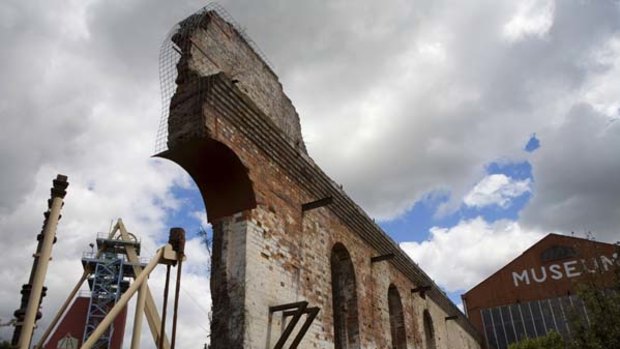
Tunnel vision ... Beaconsfield's mining museum.Credit: Andrew Bain
Beaconsfield's mining museum has become one of Tasmania's major attractions, writes Andrew Bain.
On Anzac Day, 2006, the previously little-known Tasmanian town of Beaconsfield was turned into a national headline when a mine collapse killed Larry Knight and trapped Brant Webb and Todd Russell for a fortnight. Four years later, the memory of the pair's dramatic rescue has transformed the town into a headline act, with the Beaconsfield Mine and Heritage Centre and its showpiece display on the rescue named as Tasmania's top heritage and cultural tourism attraction at the 2009 Tasmanian Tourism Awards.
Before the rockfall, the heritage centre - then known as the Grubb Shaft Gold and Heritage Museum - was a seldom-visited country museum, its staff squeezed into a small area inside the engine house of the old Grubb Shaft mine near the middle of town. Through the fortnight of national glare in 2006, the museum was forced to close because it couldn't accommodate all the people wanting to visit.
But things have changed in Beaconsfield, a town now firmly on Tasmania's northern tourist track. In November 2008 the museum was rebranded and expanded, with the creation of the mine rescue display as well as a large new reception area and gift shop catering to a boom in visitor numbers.
"We had a bit of tourism before the accident but now it's really taken off because it's got a name,'' says the heritage centre curator, Pru Wright. "Our visitor numbers have more than doubled in the last three years - we literally doubled overnight. People see the name Beaconsfield and think, 'I must go there.'"
In front of the museum and the grand facades of the Grubb and Hart Shaft engine houses, a plaque presented by the former prime minister, John Howard, commemorates the town's "resilience, generosity and spirit of mateship". Inside, it's that mateship that is celebrated in the mine rescue display, with its exhibits pieced together with the help of Webb and Russell.
"I think they got it pretty well spot on," Webb says. "We wanted it for the rescuers and that's what it is, a rescuers' display. If it wasn't for them, we wouldn't be here."
Photos and witness accounts lead visitors through the collapse and rescue, from the earthquake that triggered it to the moment Webb and Russell emerged from the shaft 14 days later. There's also the chance (claustrophobes look away now) to crawl through a narrow concrete pipe into a replica of the steel cage in which Webb and Russell were trapped.
Away from the rescue display, the mine and heritage centre sprawl into a fascinating now-and-then account of Beaconsfield's golden days, which began in the late-19th century when more than 50 mines operated around the town.
The last mine had closed in 1914, with the Hart Shaft mine - the scene of the rockfall - reopening in 1999, 15 years after the establishment of the museum.
The museum is centred on the abandoned Grubb Shaft, which adjoins the Hart Shaft, with walkways heading out from the decrepit engine house to displays that include old pump rods, a working waterwheel and battery stamper. There are also hand tools found during the 20 years it took to dig out and reopen the Hart Shaft.
The walkways finish at an observation platform overlooking the working mine, just metres from the massive headframe that dominates the town, with miners rising from and descending into the earth past the tag board that became such a symbol of the 2006 rescue.
"Maybe people come to see the mine rescue display but they are blown away by the whole thing," Wright says. "There are other mining museums around but you can't stand there and see the old and the new side by side."
Virgin Blue flies to Launceston from Melbourne ($69) and Sydney ($99). Fares are one way including tax. Beaconsfield is about 40 kilometres north of Launceston. The Beaconsfield Mine and Heritage Centre is open daily from 9.30am-4.30pm, entry $11. See www.beaconsfieldheritage.com.au.
Sign up for the Traveller Deals newsletter
Get exclusive travel deals delivered straight to your inbox. Sign up now.